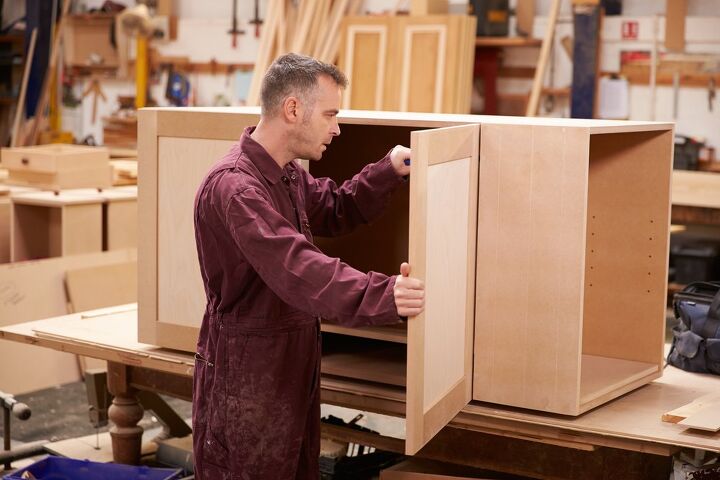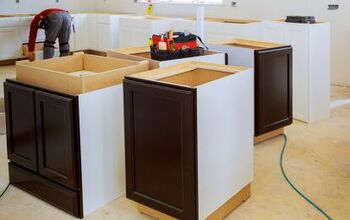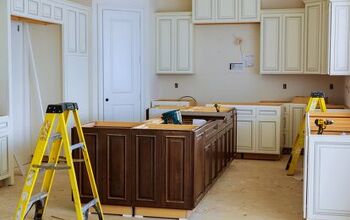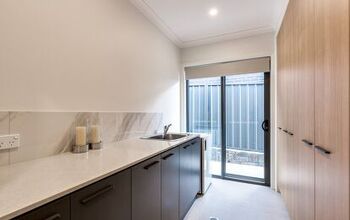Custom Vs. Prefab Cabinets: What Are The Major Differences?

When it comes to any design of your kitchen area, cabinets are crucial. And when it comes to cabinetry, you have a lot of alternatives. Prefabricated vs. custom cabinetry are two choices; then there’s the door design, paint, and stain selections…inset vs. overlay, and so on. Cabinetry has many delicate features that contribute to the overall aesthetic of your room.
When it comes to custom cabinets versus prefab cabinets, the custom cabinets are the best option between the two as you get a better value for your money. Even semi-custom is a better choice; even though these options are both costly, you do get what you pay for; custom is higher quality.
The way cabinets are manufactured is one of the most significant changes. We usually categorize them into three groups: custom, semi-custom, and prefabricated. It can be challenging to figure out which one is best for you and your project. We’ve compiled a list to assist you in determining which option is best for your project.
To assist you in making your selection, we’d like to explain the differences between prefab, semi-custom, and custom cabinets, as well as the benefits and drawbacks of each.
Do You Need to Hire Cabinet Installers?
Get free, zero-commitment quotes from pro contractors near you.

Difference Between Prefab And Custom
Prefabricated cabinetry can save you a lot of money. The main distinction between prefabricated cabinets and custom cabinets is that prefabricated cabinets are a “what you see is what you get” product.
In bathrooms, we frequently use prefabricated cabinetry. When it comes to kitchens, we highly advise against using prefabricated cabinetry, but bathrooms are a more practical application. It is more cost-effective and has simpler designs.
What Exactly Is Prefab?
Prefab cabinets are the vanities you see in any neighborhood home improvement store that you can buy right off the floor.
When it comes to prefab, the price tag is always enticing, but if this is an area you’ve been dreaming about and saving up for, cabinets are where we recommend you splurge so you don’t have to rebuild this space again in a few years due to poor quality.
Prefabricated bathroom cabinetry normally includes a sink and a countertop. This can be both a pro and a con depending on the situation. Again, it’s a money saver, but your alternatives are limited, and the holes for your faucet will have to be predrilled, so you’ll have fewer options there.
Pros Of Prefab
Prefabricated cabinets are incredibly cost-effective and have a rapid turnaround time. Cabinets can be used effectively in locations where they aren’t the prominent focus, such as a laundry room or a mudroom.
Some providers frequently have samples or whole cabinets in the intended place to view, feel, touch, and imagine. Others, on the other hand, are relying on visuals found online and praying it comes out looking the same.
Cons Of Prefab
Durability can suffer as a result of cost-cutting. Prefabricated cabinet paint isn’t bad by any means, but it won’t hold up to the scrutiny of a custom cabinet paint job.
And you can’t usually paint over prefab. The number of cabinet options is similarly limited. There are fewer options available, which limits your possibilities if you have a unique space.
Semi-Custom Cabinetry
Semi-custom cabinetry is a hybrid of prefabricated and custom cabinetry, a happy medium in the prefabricated vs. custom cabinetry argument. You receive prefab quality and some customization possibilities, but not all of the options that are completely customized allows.
However, basic features can still be incorporated in, such as the bespoke floating shelves and cabinetry work around the microwave in this kitchen. These adjustments would not be possible with prefab because they only have standard cabinetry box sizes.
Pros Of Semi-Custom Cabinetry
Semi-custom cabinet lines provide a wide range of options. They have a variety of colors and stains to pick from, as well as different cabinet types. Although this cabinet is prefabricated, meaning it was mass-produced in a warehouse, the quality is comparable to that of a handcrafted cabinet.
You have more cabinet size possibilities with semi-custom, which can also be altered. This makes deciding on the arrangement of your kitchen a lot easier.
So, for example, we may design this bathroom vanity to fit snugly into this opening. This would not have been possible with prefab, and there would have been gapping on both sides, resulting in extra dust and cleaning.
They also have a large selection of moldings that match or complement the cabinetry. Depending on the source, turnaround time can range from one week to one month.
Cons Of Semi-Custom Cabinetry
The paint quality is, in my opinion, the major disadvantage of semi-custom cabinets. We’ve noticed a significant difference in the paint job on custom versus semi-custom cabinets time and time again.
Not to suggest that semi-custom isn’t good, but the custom line is simply superior. Although mass production reduces labor costs, it inevitably reduces quality. Semi-custom lines frequently include “fillers” to place between cabinets.
This gives you the measurements you want from one end to the other. For example, if you have a 75-inch-long wall and two 36-inch-wide lower cabinets, they only span a total distance of 72 inches. To provide a snug fit to each wall, a 3-inch filler is installed between the cabinets.
If done correctly, the filler can be virtually undetectable, but in most cases, using no filler results in a much cleaner and superior finished product.
Do You Need to Hire Cabinet Installers?
Get free, zero-commitment quotes from pro contractors near you.

Custom Cabinetry
To begin, what exactly is bespoke cabinetry? Custom cabinetry is cabinetry that has been built expressly for your project. A custom cabinet maker purchases materials and constructs the cabinet in his business. Most cabinet shops will come out to your home, take precise measurements, and build on-site or in a shop.
For spaces where you require your cabinets to fit tight and flush in the specified space, custom cabinetry is essential. Here are a couple of Jamie’s projects that he designed to fit exactly into a room, wall to wall, and/or floor to ceiling.
However, custom cabinetry necessitates a significant amount of work and attention to detail. Cabinet makers work for weeks on end to create your ideal final product, but we guarantee it will be well worth the wait and expense.
Pros Of Custom Cabinetry
When it comes to prefabricated versus custom cabinets, custom cabinetry is the finest option. A custom cabinet is of the highest quality, and you won’t find anything better.
Cabinet makers frequently have their work sprayed and properly dried in a paint shop. This method results in less cracking, higher longevity, and a superior cabinet finish overall.
The possibilities are nearly limitless. A custom cabinet builder can more practically or artistically satisfy your needs.
A custom cabinet builder would be able to satisfy special needs such as a 13.5-inch wide cabinet that would be nearly hard to obtain in a prefabricated cabinet line. You can also pick any color you want, although prefab doesn’t allow you to do so.
Cons Of Custom Cabinets
Customer cabinetry is the highest-quality cabinetry money can buy, hence it comes at a greater price. Custom cabinets are costly, and rightfully so.
However, when it comes to selling them to clients, this is the largest impediment. For example, a line of bespoke cabinetry in a normal kitchen size can cost anything from $30 to $60,000.
Time might also play a significant role. Quality custom cabinetry is probably not going to work within your timeframe if you’re seeking to make a quick flip or simply want to remain under construction for a month.
Building bespoke cabinets can take anywhere from 2 to 8 weeks of human labor, depending on the scale of your project, and it can now take even longer due to material lead periods.

Heather is a passionate writer who loves anything DIY. Growing up, she learned everything from home repairs to design, and wants to share her tips with you. When she's not writing, she's usually hiking or searching for her next DIY project.
More by Heather Robbins



























